HirelyAI is an AI-powered job evaluation platform that helps recruiters and job seekers connect efficiently. Instead of traditional resume matching, HirelyAI assesses applicants based on their responses to a series of questions and provides an AI-driven evaluation of their suitability for a role.
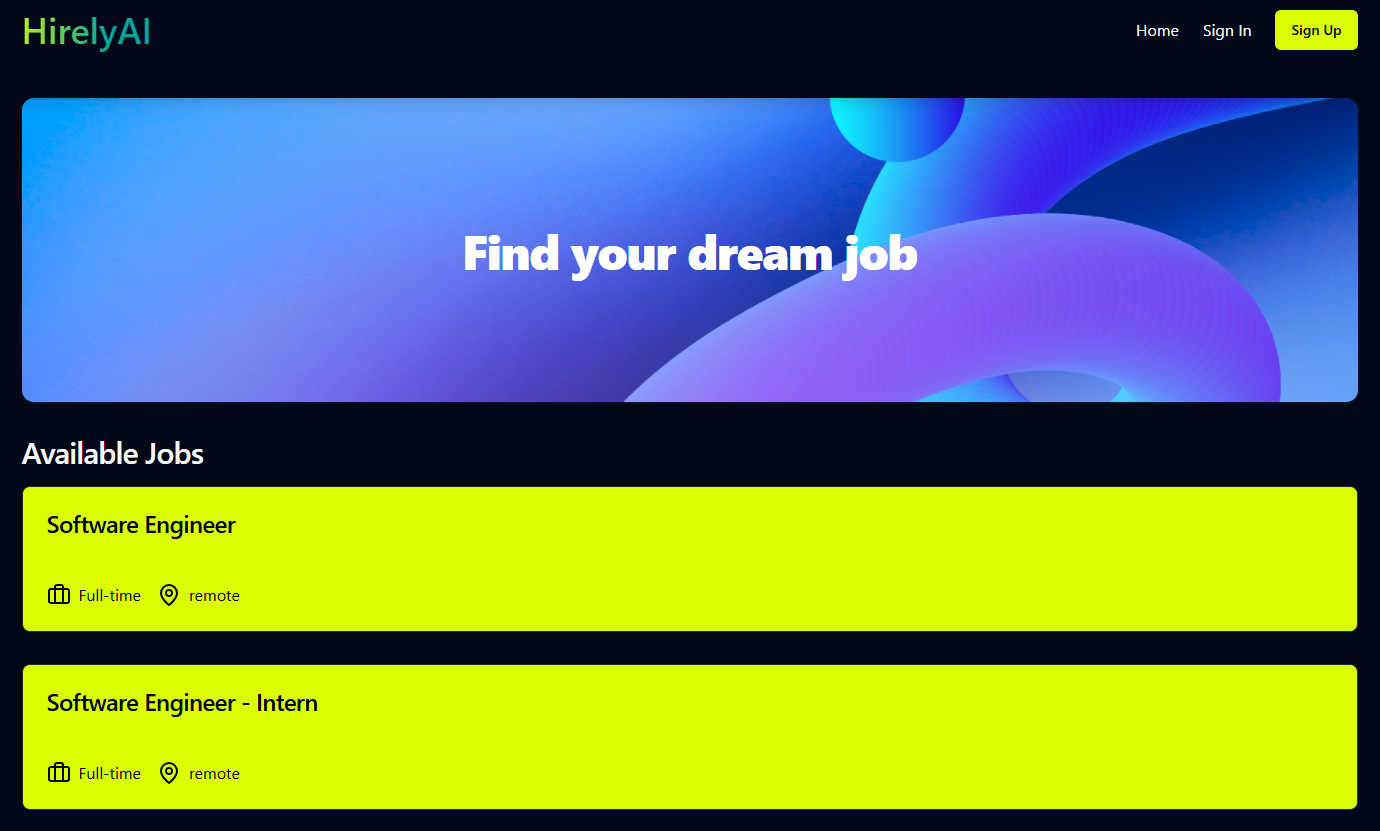
To check how the AI feature is working, you need to get admin access. Once you have access, you can go to the dashboard and check the AI features.
Do you need to check the admin section (AI feature) in this application? If so, follow the steps.
So First of all, we log in to the app and gain access to all features for the admin section.
Project Access Guide
Test Account Login Instructions
Quick Access Steps
Open Project
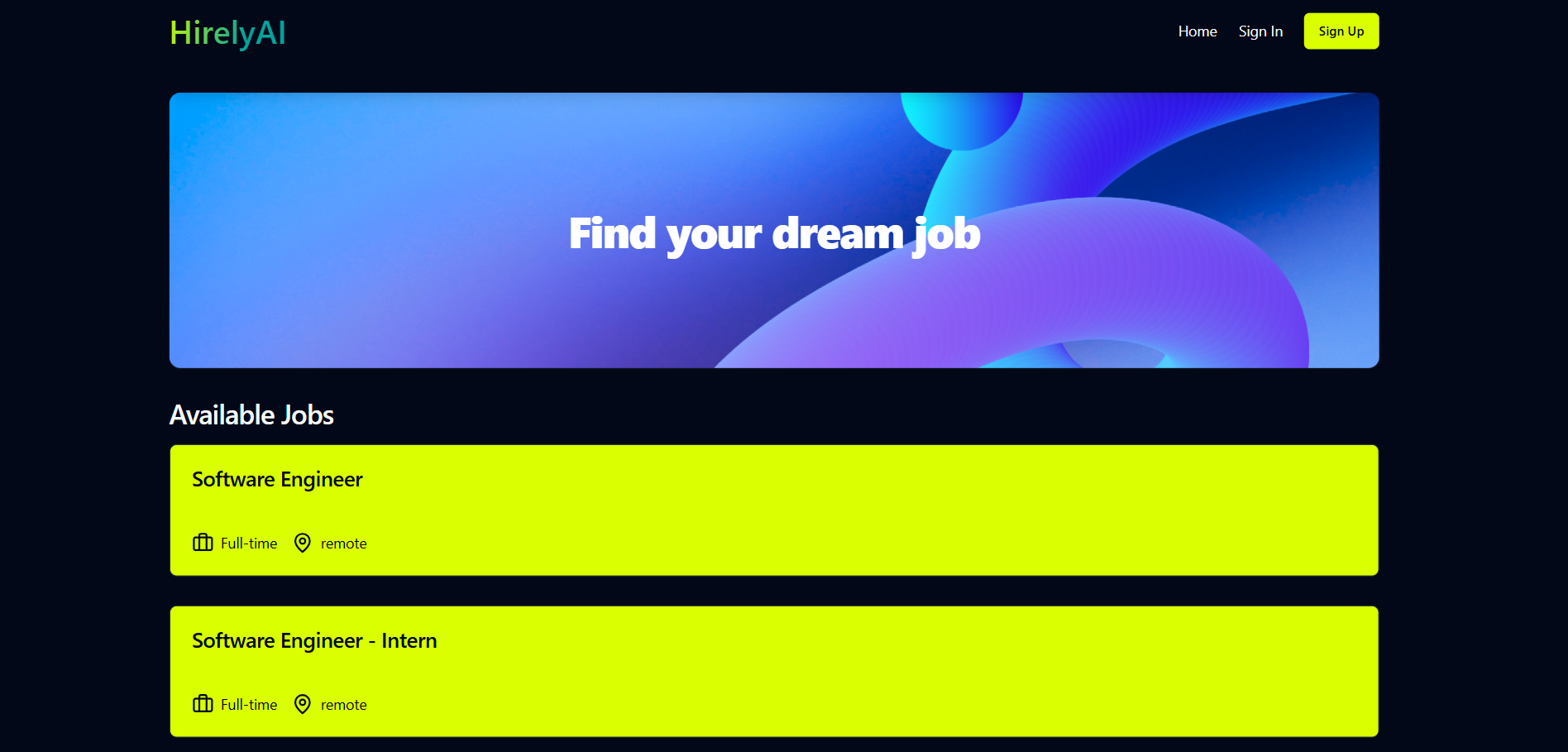
Access the Login Page
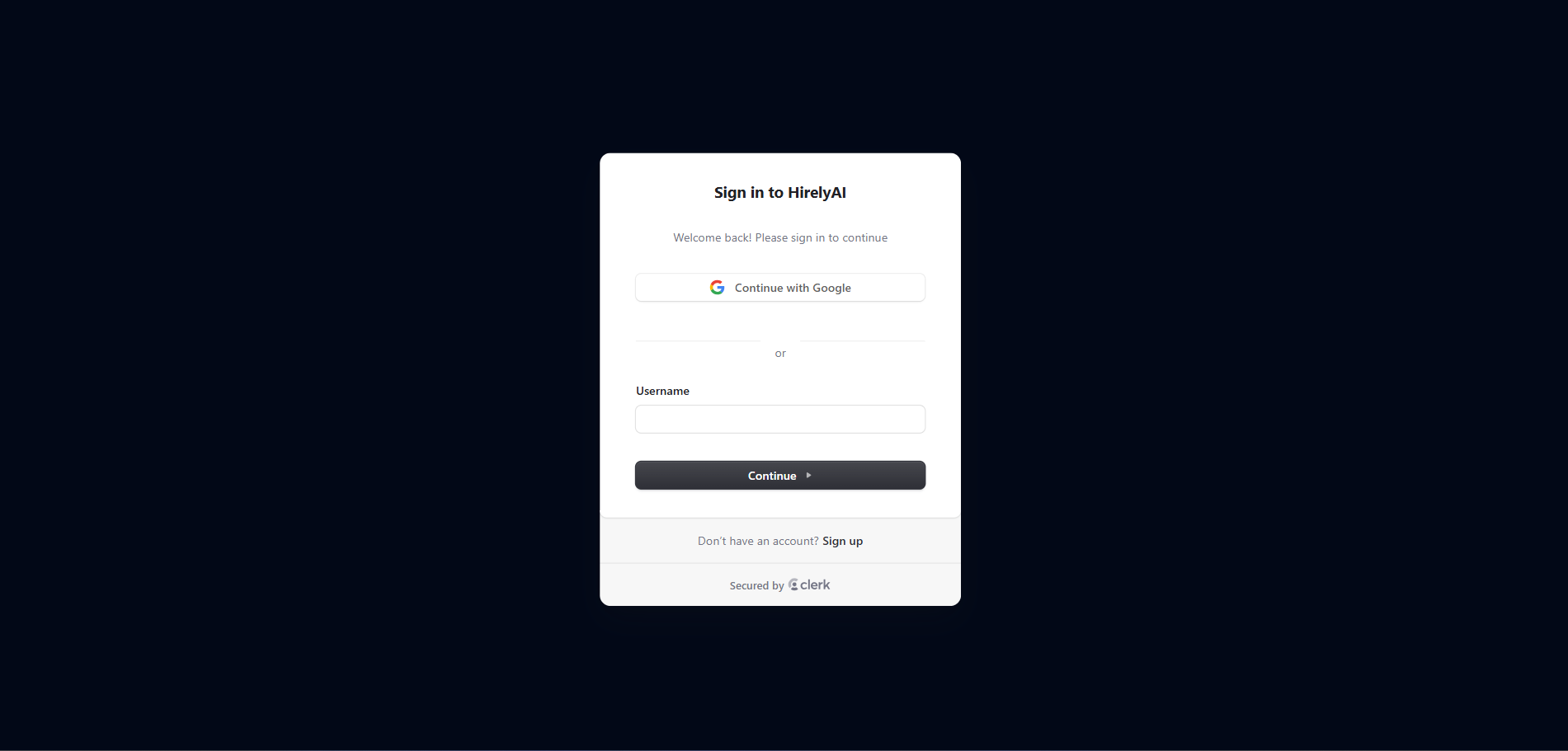
Enter Credentials
Username: john
Password: Johndoe&123
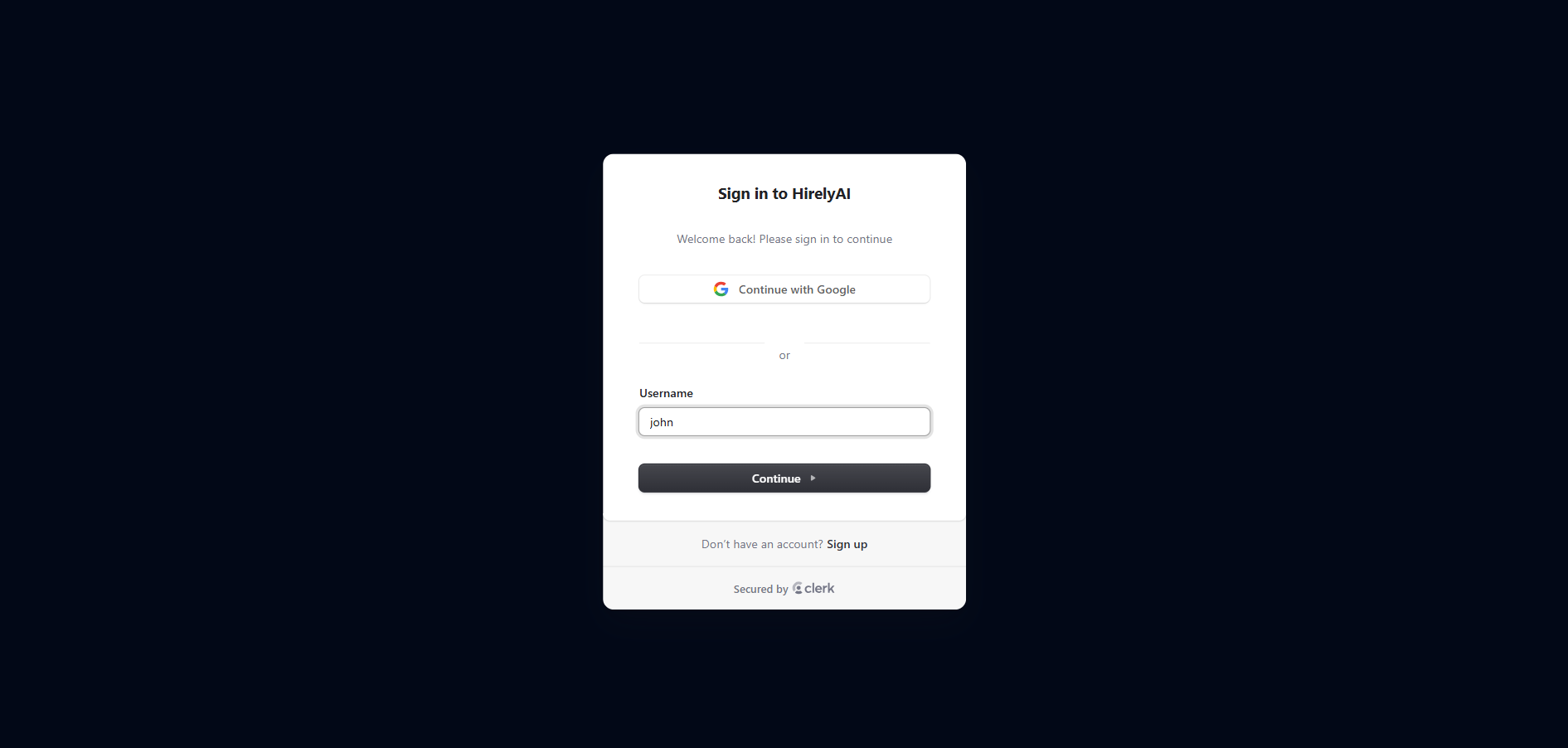
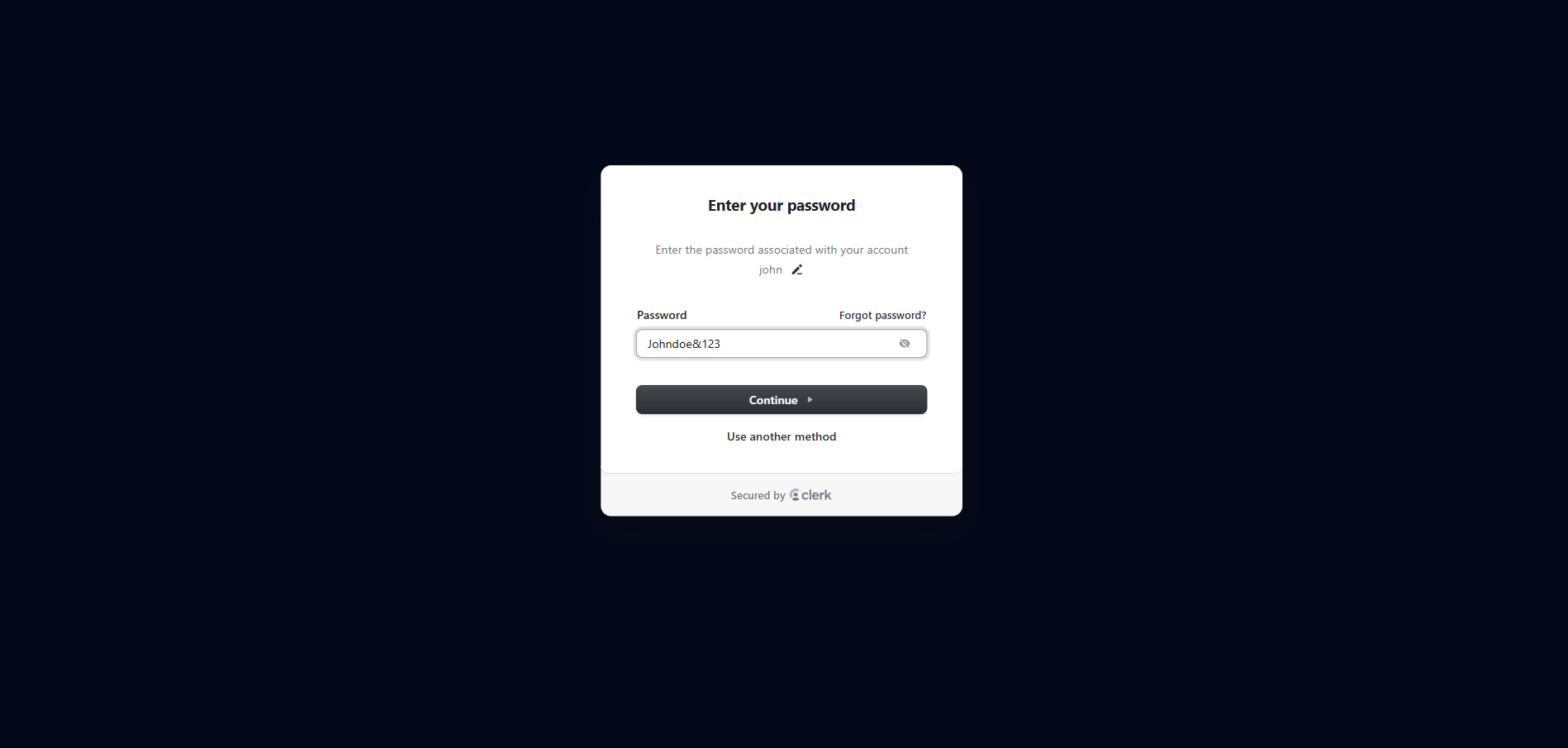
Step 1: Access the Admin Dashboard
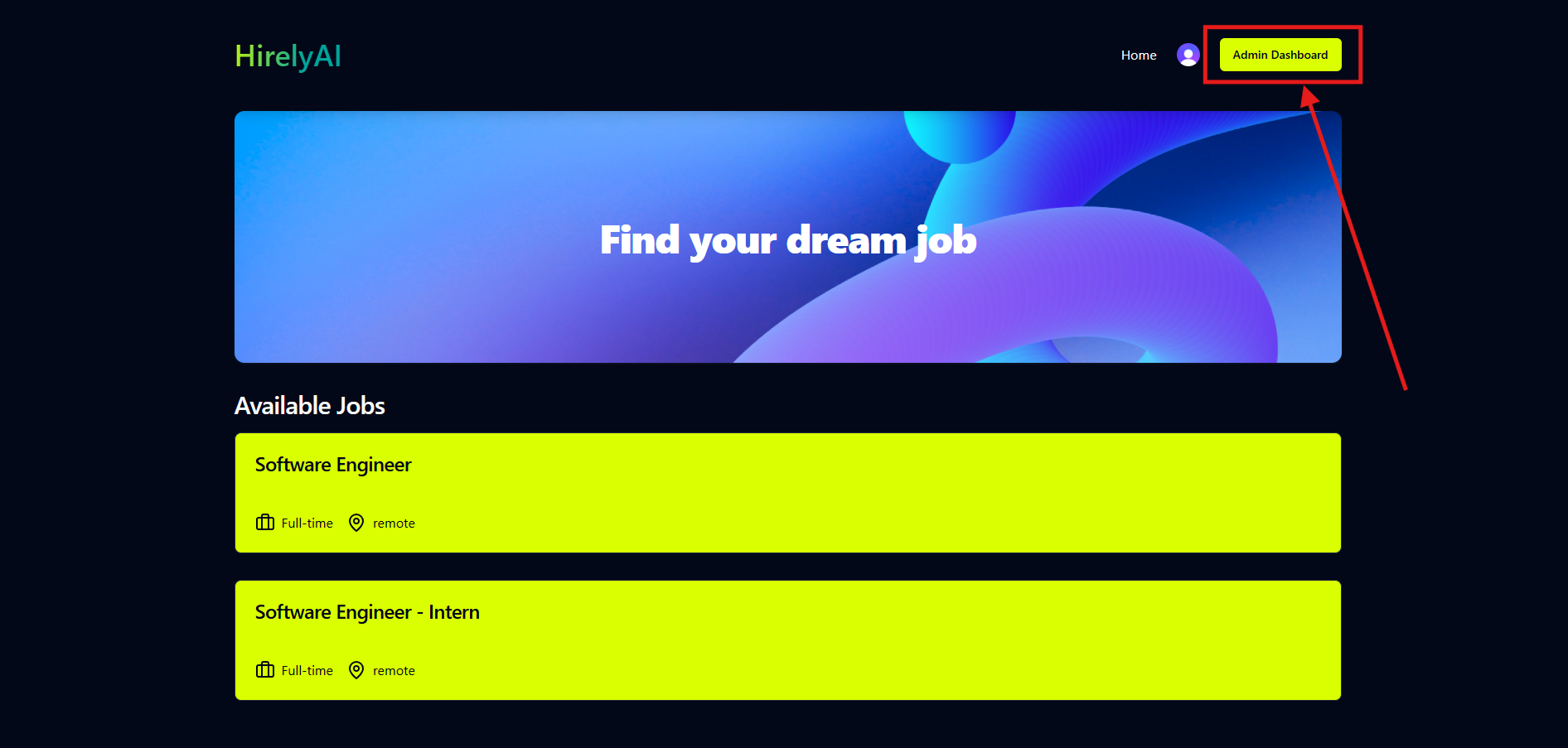
Step 2: Navigate to Job Postings
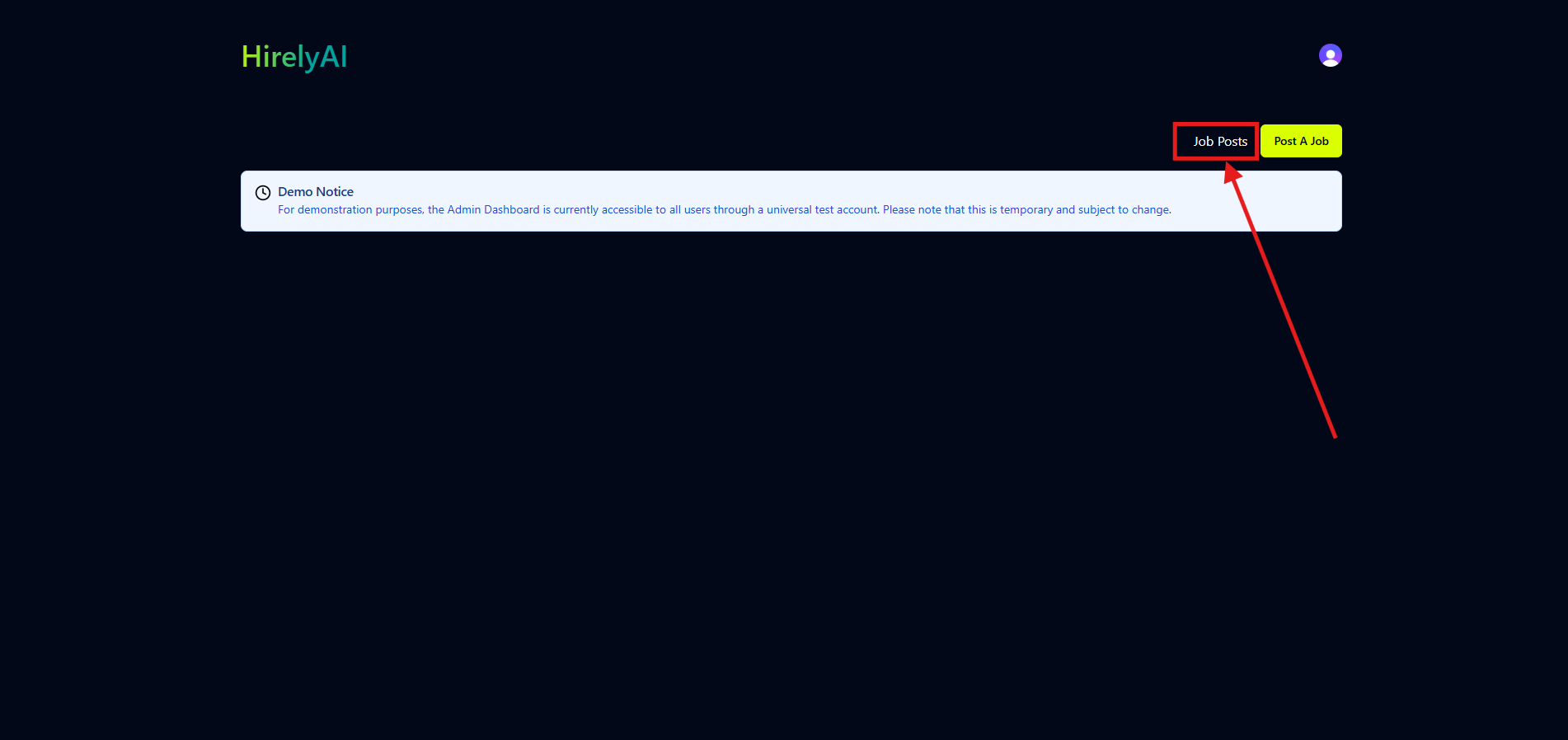
Step 3: Navigate to a Job Post
Look for the "Current Job Postings" section
Verify the job details (in this case, Software Engineer - Full-time, remote)
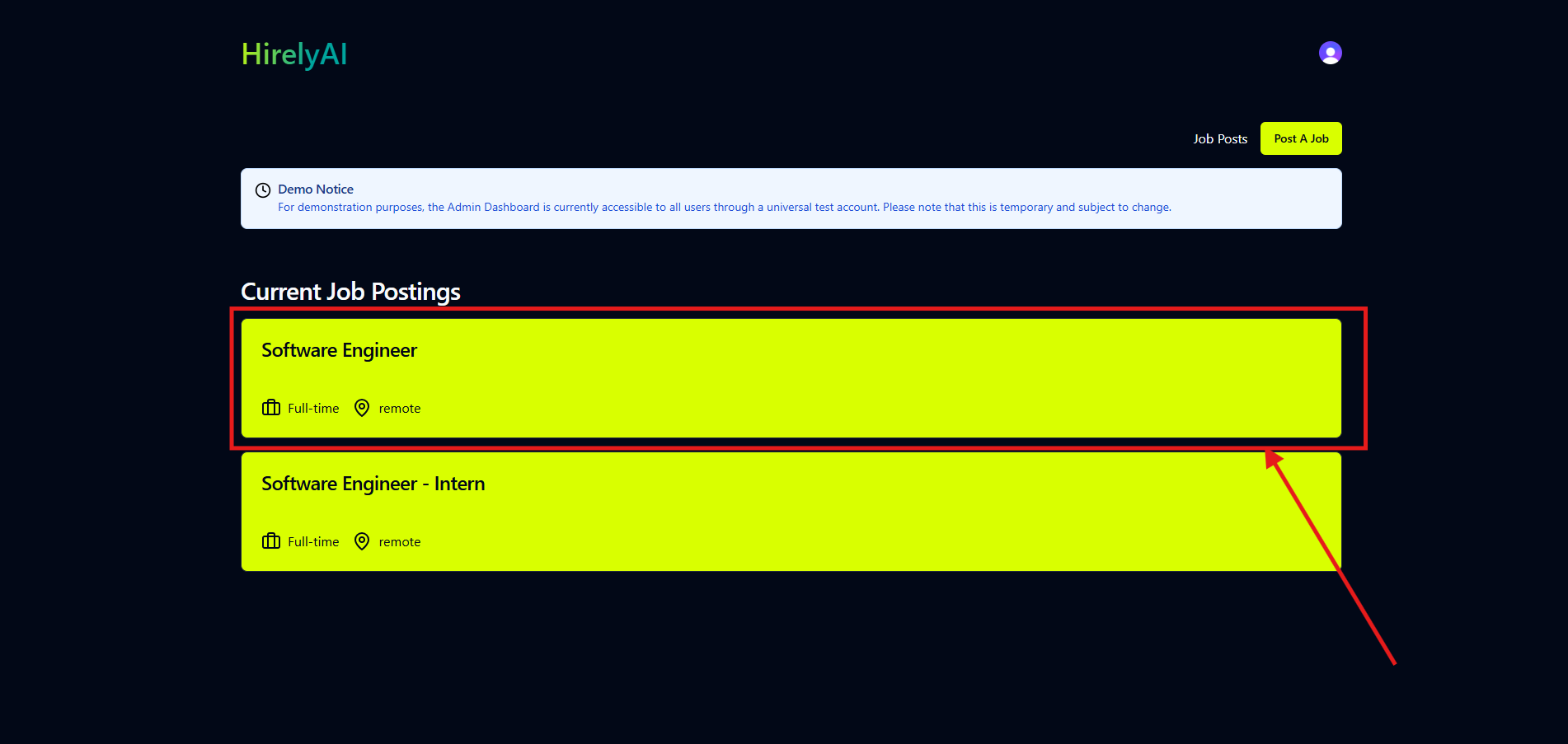
Step 4: View Job Applications
In the "Job Applications" section, you'll see a list of applicants
Click "View" next to the applicant you want to review
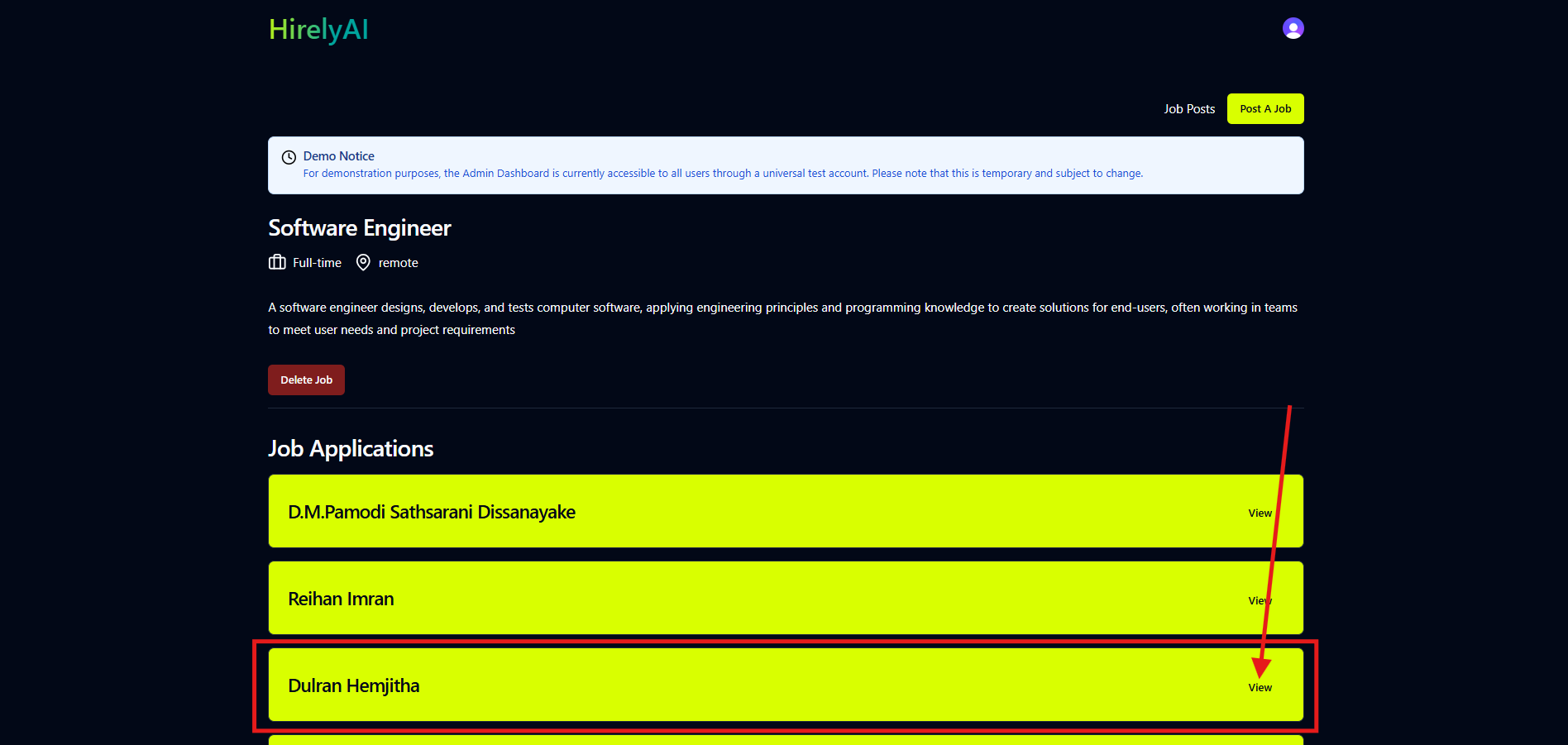
Step 4: Review Applicant Details with AI Features
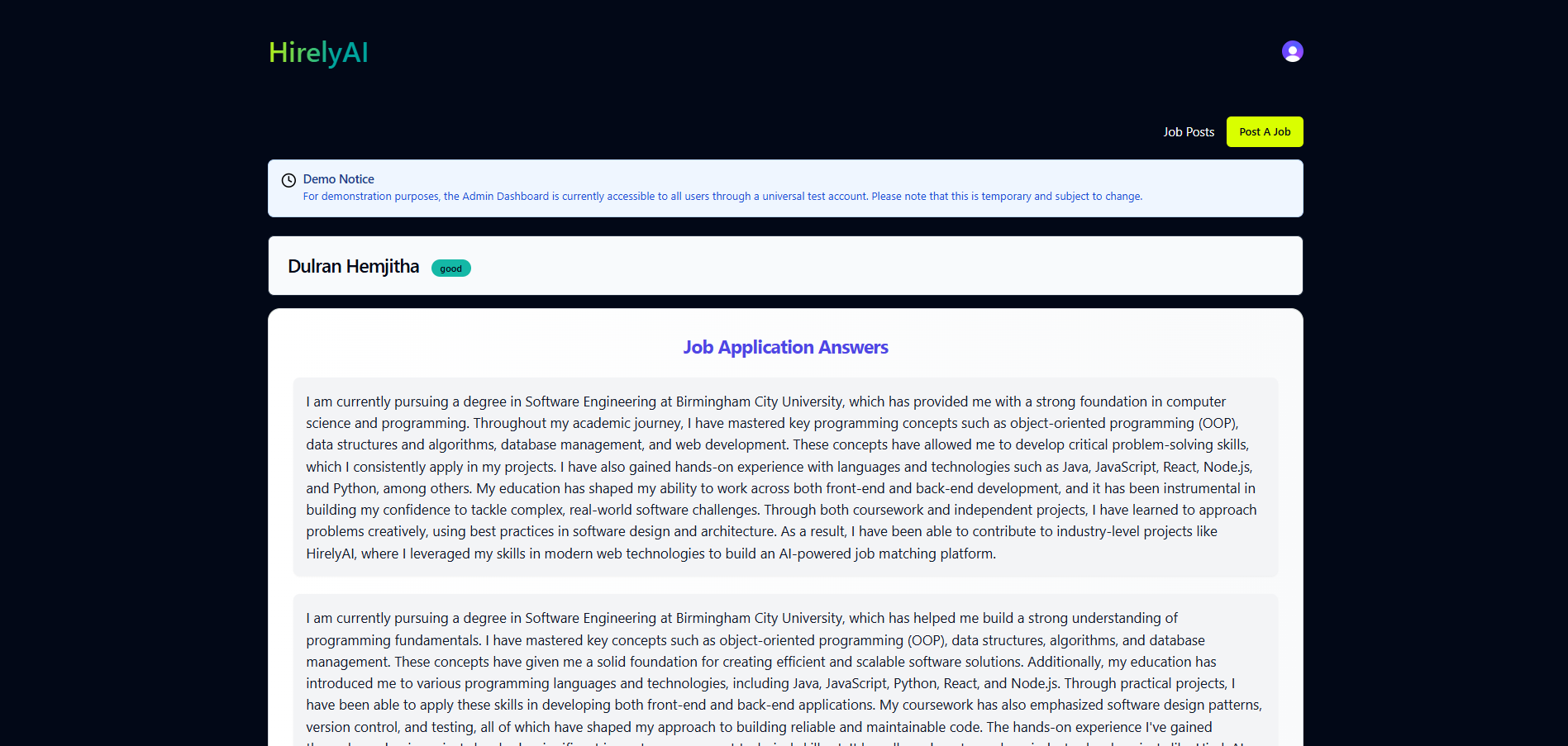
Troubleshooting
🤔 Problem space
Problems to solve/Requirements to Create
Hiring managers and recruiters need a faster, smarter way to evaluate job applicants without spending hours manually reviewing each submission. Applicants also need clear, personalized feedback to improve their chances in future applications. HirelyAI aims to automate applicant evaluation and feedback, saving time and improving the hiring experience for both recruiters and candidates.
👉 Problem: Inconsistent Job Applicant Evaluation
Problem Statement: Hiring managers and recruiters struggle to quickly assess the quality of job applicants due to the overwhelming volume of applications. Manually reviewing each application often leads to inconsistencies and delays in the hiring process.
Current Solution: Currently, hiring managers review resumes and application answers manually, which is time-consuming and prone to bias or missed details. This process often includes reviewing resumes, checking qualifications, and manually ranking candidates.
How do we know it is a problem:
User feedback: Hiring managers report that reviewing large numbers of applications is time-consuming and tiring.
Metrics: Slow hiring times and missed recruitment deadlines have been observed.
Evidence: Applicant drop-off rates are higher when the application process feels overly complex or slow.
👉 Problem: Lack of Personalized Applicant Feedback
Problem Statement: Applicants do not receive personalized feedback or suggestions to improve their future applications. This results in a lack of engagement and potential frustration, as applicants don't understand the reasons behind their rejection.
Current Solution: Currently, applicants either receive generic rejection emails or no feedback at all. There's no system in place for giving personalized insights into why they were rejected or how they could improve their applications.
How do we know it is a problem:
User feedback: Applicants express dissatisfaction when they don’t receive detailed feedback on their applications.
Metrics: Low return applicant rates; many applicants do not reapply after being rejected.
Evidence: A significant number of applicants ask for feedback or feel discouraged after rejection without understanding why.
👉 Problem: Time-consuming Applicant Sorting
Problem Statement: Hiring managers face challenges in quickly categorizing applicants based on their suitability for the job. This manual sorting process can be inefficient, especially for companies with a high volume of applicants.
Current Solution: The current solution involves hiring managers manually reviewing answers to interview questions and resumes to categorize candidates into buckets such as "good," "moderate," or "bad." This method is prone to inconsistency and may overlook key candidate strengths or weaknesses.
How do we know it is a problem:
User feedback: Hiring managers mention that manual categorization is time-consuming and leads to inconsistent decision-making.
Metrics: Delays in decision-making and dissatisfaction from candidates who feel their qualifications may have been overlooked.
Evidence: User surveys reveal frustration with the manual process and a desire for a faster, automated system.
Why solve these problems?
Addressing these problems will significantly enhance both the recruiter and applicant experience, streamline hiring processes, and provide a competitive edge for organizations in attracting top talent.
Reason: Manual evaluation consumes excessive time and introduces human bias, leading to poor hiring decisions and delays. Automating this will speed up the process and improve consistency.
Reason: Applicants who receive personalized feedback are more likely to reapply and engage positively with the company, building a stronger employer brand.

Goals
Company objective 🎯
💡 To create an AI-powered job application evaluation platform that helps companies streamline hiring by automating applicant assessment, categorization, and feedback delivery.
Project goals
Project goal: Build an AI-driven system that automatically evaluates applicants’ answers and categorizes them as Good, Moderate, or Bad, ensuring faster and unbiased decision-making.
Project goal: Develop a user-friendly admin dashboard for recruiters to view, manage, and filter applications with ease, aligning with the goal of simplifying the recruitment process.
Project goal: Design and implement a responsive, clean UI with Tailwind CSS and React to ensure usability and scalability for both recruiters and applicants.
Project goal: Integrate OpenAI's GPT model for intelligent text analysis and scoring, contributing directly to the company objective of automating talent evaluation.
User Stories
User Type: Job Applicant
Description: The job applicant is looking for job opportunities and wants to submit an application through HirelyAI. They expect a simple and smooth application process.
User Type: Recruiter/Hiring Manager (Admin)
Description: The recruiter is responsible for reviewing job applications and shortlisting candidates. They rely on HirelyAI to automate applicant evaluation and categorization.
🌟 Design space
UI Design
The UI design of HirelyAI focuses on simplicity, clarity, and efficiency for both recruiters and applicants. The main flow is:
Home Page: Introduction to the platform, features, and a call-to-action to log in or apply.
Applicant Flow:
Recruiter/Admin Flow:
Login → Access the dashboard.
View a categorized list of applications (Good, Moderate, Bad).
Click on an application card to view answers and AI evaluation.
Take actions like shortlist or reject.
Low-fidelity Wireframe
Design concept
The core design concept for HirelyAI focuses on clarity, minimalism, and actionable layouts. The goal is to create a smooth experience for applicants, recruiters, and admins without clutter. Each screen is broken into clear sections with large touch-friendly elements, intuitive navigation, and a focus on showcasing AI-generated insights cleanly.
For applicants: The flow is simple, with a homepage leading to job listings, then to a guided application form with conversational question fields.
For recruiters/admins: The dashboard uses card-based layouts and categorized tabs to easily view and manage applications (Good, Moderate, Bad).
Wireframes

✍️ Home Page Wireframe
Top section: Logo, navigation buttons (Sign in, Sign up)
Large hero banner describing platform features
Job Section with clearly listed job posts

✍️ Applicant Application Form Wireframe
Question field with large input boxes
"Clear" and "Submit" buttons at the bottom
Confirmation notification
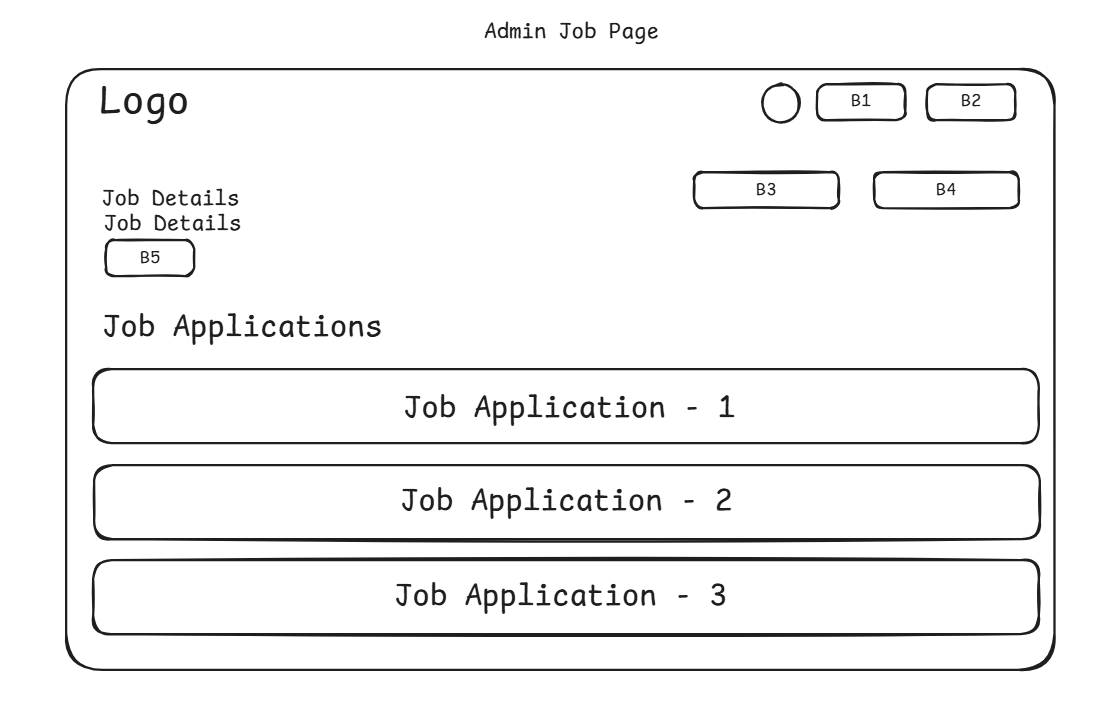
✍️ Recruiter Job Applications Wireframe
Sidebar: Navigation links (Job Posts, Create a Job)
Candidate cards with summary details (name, applied role)
Clickable cards leading to detailed candidate review
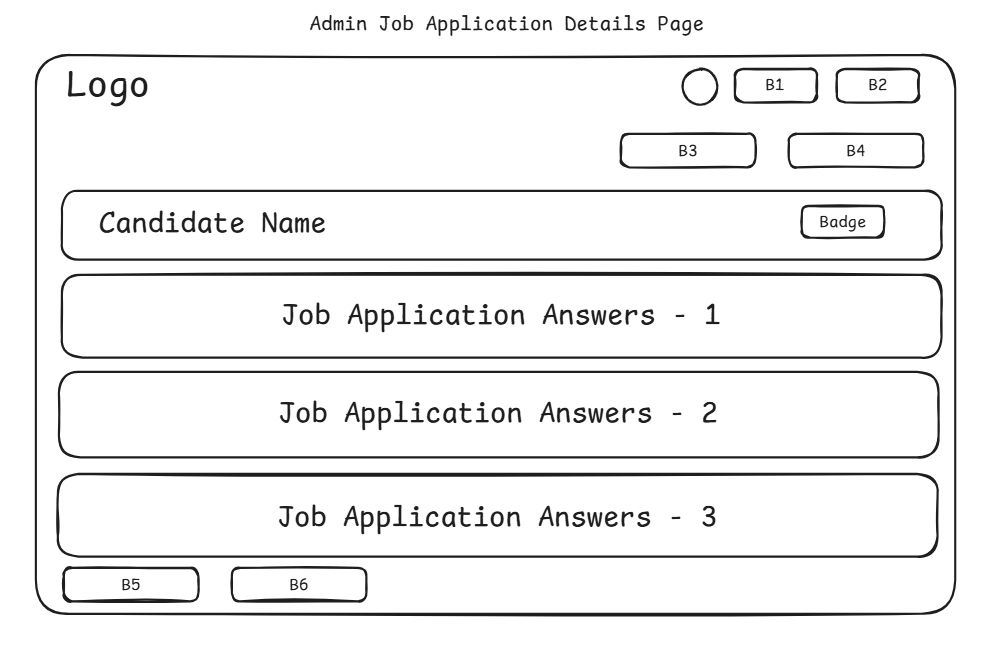
✍️ Application Details Page Wireframe
Header: Candidate info + AI scoring badge
Body: List of each question with applicant’s answer
Bottom actions: Shortlist / Reject buttons with confirmation modals
Development Phase
Technology Stack Selection
Frontend - React.js with Tailwind CSS
Why React.js?
Component-Based Architecture: React’s modular structure allows you to create reusable components, which helps in building a scalable and maintainable frontend. This modularity is crucial for projects like HirelyAI, where different sections (e.g., forms, results) can be isolated and updated independently.
Virtual DOM for Performance: React’s use of a virtual DOM ensures efficient rendering, which results in a fast and responsive user experience, especially important when the app involves dynamic updates based on user inputs.
Strong Ecosystem: React's vast ecosystem and community support make it easier to find solutions, libraries, and tools to enhance development productivity, ensuring the app stays up to date with the latest trends in web development.
Why Tailwind CSS?
Utility-First Design: Tailwind CSS's utility-first approach makes it incredibly flexible, allowing you to apply custom styling directly within HTML. This speeds up the development process and ensures consistency in design across the app.
Responsive Design: Tailwind CSS includes built-in support for responsive design, which is crucial for ensuring HirelyAI’s UI works seamlessly on all devices.
Customizability: Tailwind makes it easy to implement unique designs without writing custom CSS, enabling you to quickly build and adapt the UI to suit the branding and user experience goals of HirelyAI.
Backend - Node.js with Express.js
Why Node.js?
Single Language for Full Stack: Using JavaScript both on the frontend and backend (via Node.js) ensures code consistency, reducing context switching and making the development process smoother.
Asynchronous & Event-Driven: Node.js’s non-blocking, event-driven architecture is perfect for I/O-heavy applications like HirelyAI, where real-time interactions (e.g., submitting applications, AI categorization) are frequent and critical.
Scalability: Node.js is well-suited for scalable applications, ensuring that as HirelyAI grows and handles more users, the backend can scale without compromising performance.
Why Express.js?
Lightweight and Flexible: Express.js offers a minimalistic framework that enables rapid development while providing the flexibility to add middleware, routes, and functionalities as needed.
Routing and Middleware: Express’s routing system is intuitive and supports the use of middleware, making it easier to handle complex backend logic like user authentication, request validation, and error handling.
Large Community and Support: Express is one of the most widely used frameworks in Node.js, which means there is extensive documentation and community support, ensuring any challenges in development are easily addressed.
Database - MongoDB
Why MongoDB?
Schema Flexibility: MongoDB’s NoSQL database design allows you to store diverse and unstructured data, making it an ideal choice for HirelyAI, where user responses and job applications may vary in structure.
Scalable and High Performance: MongoDB’s ability to handle large volumes of data and its built-in horizontal scaling features make it well-suited for applications that need to grow and support more users and data over time.
Real-Time Data Management: MongoDB’s architecture, combined with its indexing and aggregation capabilities, ensures that HirelyAI can manage and query real-time data efficiently, such as categorizing job applicants on the fly.
AI Integration - OpenAI GPT-3.5 Turbo
Why OpenAI GPT-3.5 Turbo?
Natural Language Processing (NLP): OpenAI’s GPT-3.5 Turbo model excels at understanding and processing natural language, which is key to HirelyAI’s feature of categorizing applicants based on their responses to questions.
Real-Time AI Interaction: OpenAI’s API allows real-time interactions, meaning the AI can instantly categorize applicants as they submit their responses, providing a seamless experience for users.
Scalable API: OpenAI’s API is highly scalable, meaning as more users interact with HirelyAI, the AI component will remain responsive and reliable, handling high demand without performance issues.
User Authentication - Clerk Authentication
Why Clerk Authentication?
Built-in User Management: Clerk provides a comprehensive authentication system that includes sign-ups, logins, and secure session management out of the box, which saves time and effort in building custom solutions.
Integration with Modern Apps: Clerk’s easy integration with React allows for seamless authentication flows, making it a good choice for HirelyAI’s needs.
Security and Compliance: Clerk ensures security features like password hashing and multi-factor authentication, which are critical for safeguarding sensitive user data, especially for job applicants.
High-Level Architecture Diagram
Architecture Diagram Description:
The architecture of HirelyAI is built around a Client-Server Model with distinct separation of concerns between the frontend, backend, and AI integration.
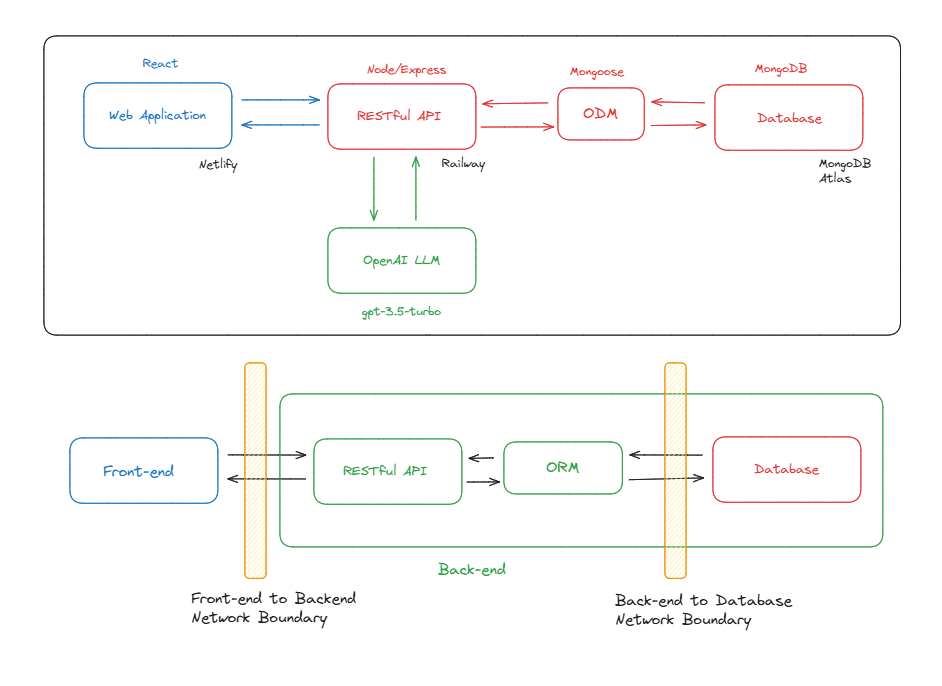
Frontend (React.js + Tailwind CSS): The frontend is responsible for handling user interactions, displaying forms for job applications, and presenting the AI-driven results of categorization. It communicates with the backend via RESTful API calls to submit user data and retrieve results. Tailwind CSS is used for styling the UI to ensure it is responsive and visually appealing.
Backend (Node.js + Express.js): The backend handles all business logic, such as processing job application data, interacting with the database, and integrating with the AI component. It exposes a set of RESTful APIs for the frontend to interact with. Express.js handles routing, middleware, and error handling efficiently.
Database (MongoDB): MongoDB stores all data, including user information, job applications, and AI categorization results. The database's NoSQL nature allows it to handle dynamic and varying data structures efficiently.
AI Integration (OpenAI GPT-3.5 Turbo): OpenAI's GPT-3.5 Turbo API is integrated into the backend to categorize job applications based on users' answers. The backend sends user responses to the API, which processes the data and returns a category (e.g., Good Applicant, Moderate, Bad).
Basic Entity-Extended Relationship

Key Features of the Software
User Authentication (Clerk Authentication)
Decision: Used Clerk Authentication to handle user authentication, ensuring secure login and session management.
Implementation:
Integrated Clerk Authentication for user sign-up, login, and session management.
Ensured compliance with security standards by using features like multi-factor authentication and password hashing.
Job Application Form Submission
Decision: The job application form collects user responses to specific questions and stores them in the database for later categorization.
Implementation:
Created a dynamic job application form in React to handle different question types (e.g., multiple choice, text).
Submitted the form data via API calls to the backend for processing.
AI-Based Categorization (OpenAI GPT-3.5 Turbo)
Decision: Used OpenAI GPT-3.5 Turbo for natural language processing to categorize applicants based on their responses.
Implementation:
Integrated the OpenAI GPT-3.5 Turbo API into the backend to process job application data.
Categorized applicants into three groups: Good, Moderate, or Bad based on their answers to predefined questions.
Database Design (MongoDB)
Decision: Chose MongoDB for its flexibility and scalability to handle varying data structures, such as job applications with different sets of answers and dynamic categories.
Implementation:
Designed a flexible schema that allows for easy storage of user data, job application responses, and AI categorization results.
Indexed frequently queried fields to improve query performance.
Frontend UI (React.js + Tailwind CSS)
Decision: Used React for building a dynamic and interactive UI, with Tailwind CSS to create a responsive, customizable design.
Implementation:
Built reusable UI components for the job application form, results display, and user authentication.
Styled the application with Tailwind CSS, ensuring a responsive and mobile-friendly interface.
Challenges Faced and Solutions
Problem 1:
Slow Response Time in AI-Driven Features
The AI-driven features, particularly the real-time job categorization based on user inputs, occasionally had slow response times due to multiple API calls and processing.
Solution 1:
To solve this, I optimized the backend by implementing asynchronous processing for the AI features. Additionally, I fine-tuned the API calls to reduce unnecessary requests, ensuring more efficient data handling.
Problem 2:
Difficulty in Scaling for Large User Base
As the platform grew, handling a large number of simultaneous users caused some scalability issues related to database connections and application performance.
Solution 2:
I implemented horizontal scaling for the application by deploying it on Railway and configuring auto-scaling to handle increased traffic. Additionally, I optimized database queries and utilized MongoDB Atlas's built-in scaling features to efficiently manage growing data.
Future Vision / next steps
Long-term vision:
Enhanced AI Integration:
I plan to improve the AI categorization feature further by integrating more advanced natural language processing models, enabling the system to better understand complex user inputs.
Implement an AI-driven recommendation system that can suggest jobs based on past applications and user preferences.
Improved User Interface and Experience:
I will focus on enhancing the UI with a more intuitive layout, better mobile responsiveness, and accessibility improvements to ensure users can easily interact with the platform.
I plan to add user dashboards where users can track the status of their applications, receive notifications about job openings, and get feedback on their profile.
Real-Time Notifications and Alerts:
Implement WebSockets for real-time notifications, so users can get instant updates on their application status and job opportunities.
Integrate push notifications to alert users about job recommendations and status changes in real time.
Multi-Language Support:
Version 2 Features:
Introduce more customized job recommendations based on AI's analysis of users' behavior and preferences.
Include a video interview feature where employers can interact with applicants directly on the platform.



Get visibility from recruiters & peers
Build your portfolio & personal brand
Connect with like-minded developers
